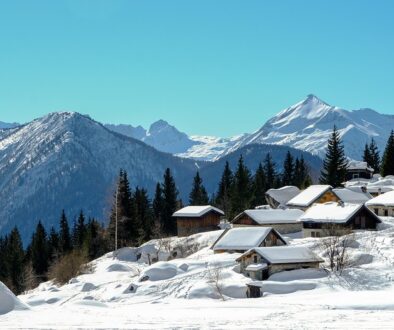Pack Smart: Essential Backpacking Tips for Your Next Adventure!
Article by: Suzette Morshead
Backpacking is a thrilling way to explore the great outdoors, promising unforgettable experiences and connections with nature. However, it can quickly turn into a nightmare if you’re not careful about how you pack. Having embarked on numerous camping trips, I’ve learned that the key to a successful adventure lies in packing smart. Here are some essential backpacking tips to help you make the most of your next journey.
1. Choose the Right Backpack
The first step in your backpacking adventure is selecting a suitable pack. Look for one that fits your body well, ideally having an adjustable suspension system and padded straps. The size of your backpack should correspond to the length of your trip—typically, 50-70 liters is ideal for weekend adventures, while longer hikes may require larger packs.
Personal Story: I remember my first backpacking trip, where I borrowed my friend’s pack, thinking that size wouldn’t matter. Halfway through the hike, I realized it was too big and awkwardly heavy for my frame. Each step felt like a workout, and I struggled to keep up with my friends. It was a lesson learned—always find a pack that complements your body and needs.
2. Prioritize Your Gear
When choosing gear, focus on essentials and multi-functional items. Prioritize lightweight, compact equipment that fulfills multiple purposes. A good example is a camping stove that doubles as a pot or a sleeping bag that can unzip into a blanket.
Checklist of Essentials:
- Tent or tarp
- Sleeping bag
- Sleeping pad
- Cooking stove
- Utensils
- Water filtration system
- First aid kit
Each item you pack should earn its place in your backpack. For example, while it’s tempting to bring that massive multi-tool, consider whether it truly adds more value than a smaller, more versatile option.
3. Organize Your Pack
Proper organization will help you locate items quickly and maintain balance while hiking. Use packing cubes or stuff sacks to categorize your gear, reserving the top of your backpack for frequently used items. Keep heavier objects closer to your back to stabilize your center of gravity.
Personal Story: On one occasion, I haphazardly stuffed my gear into my pack, leading to an exhausting search for my water bottle after a grueling uphill climb. I quickly learned that keeping essentials within easy reach can save both time and energy.
4. Pack Food Wisely
Food can be a tricky part of your packing strategy. Depending on the length of your trip, prepare meals that are calorie-dense yet lightweight. Dehydrated meals, energy bars, nuts, and jerky are excellent choices.
- Tip: Go for vacuum-sealed packs to save space and weight. Also, consider meal prep before the trip to eliminate on-the-road cooking hassles.
5. Hydration is Key
Water is indispensable in the backcountry. A reliable filtration system or purification tablets can make even the most questionable streams safe to drink. Plan your route based on the availability of water sources, and always carry sufficient backups.
Personal Story: During a particularly hot summer hike, I underestimated my water consumption and ran into an empty streambed. I won’t forget the panic I felt as I rationed the last drops in my water bottle. Now, I always have a backup plan—whether it’s an extra liter or a reliable filtration system.
6. Dress in Layers
The weather can be unpredictable, so dressing in layers helps you adapt to changing conditions. Start with a moisture-wicking base layer, add an insulating layer, and top it off with a waterproof shell. This approach allows you to shed or add layers as needed.
- Tip: Remember, the key is to stay dry. Always pack quick-dry fabrics and avoid cotton, which retains moisture.
7. Leave No Trace
Take responsibility for preserving the environment. Familiarize yourself with Leave No Trace principles, such as minimizing campfire impacts, disposing of waste properly, and respecting wildlife. Being a responsible backpacker not only protects nature but enhances everyone’s outdoor experience.
Personal Story: On one of my backpacking trips, we stumbled upon a beautiful secluded campsite, but it was marred by litter and leftover campfire remains. It was disheartening to witness such disrespect for nature. Now, I always carry a trash bag, ensuring I leave every campsite better than I found it.
8. Plan and Prepare for Emergencies
Plan your trip meticulously, checking trail conditions and weather forecasts. Compile an emergency kit that includes a first aid kit, a map and compass (or a GPS device), a whistle, and a multitool. Familiarizing yourself with basic survival skills can make a significant difference should things go awry.
Personal Story: During one of my trips, I experienced a minor foot injury that impeded my progress. Luckily, I had packed a comprehensive first aid kit and knew how to address the issue. It reminded me that preparation isn’t just about packing; it’s about being ready for unexpected challenges.
Conclusion: Embrace the Adventure
Backpacking is not just about hitting the trails; it’s about forging connections with nature and creating lasting memories. By packing smart and being well-prepared, you’ll set yourself up for success in the great outdoors. Remember, every adventure is a learning experience. Each trip reinforces the value of preparation and adaptability, turning potential pitfalls into priceless lessons.
As you prepare for your next backpacking adventure, reflect on these tips, ensure your pack is light and organized, and remember to leave no trace. The wilderness awaits—you’re ready for it!
Pack Smart: Essential Backpacking Tips for Your Next Adventure!
Article by: Suzette Morshead


